Rules, O-Kei? A potted history of how the light automobile put Japan on wheels
07 February 2023
(Part 1: 1949-1961)
The need for cheap post-war transportation was not lost on the world’s nations. As countries began to rebuild themselves with varying degrees of foreign aid, basic wheels were a stepping-stone to a more prosperous future, though some rose faster than others.
‘Kei car’, or keijidōsha, translates to ‘light automobile’; think of them as microcars and you won’t be far off. The Japanese government wanted to stimulate domestic industry and multiples of cheap wheels from whichever works could supply them.
Japan’s Ministry of International Trade and Industry (MITI) first set out its Kei specifications in July 1949; car manufacture, reinstated that year, it felt, could be boosted by cars priced similarly to that of a high-end motorcycle.
What’s more, Kei car buyers, having bought a ‘restricted’ conveyance, would find their vehicles cheaper to acquire a licence for, tax, and run, owing to more-than-decent fuel economy and limited top speeds. Aircraft, motorcycle and plant engine manufacturers could easily adapt their singles and twins to work in these new cars; to qualify, a maximum capacity of 150cc (four-stroke) and 250cc (two-stroke) was permitted.
The new rules were, frankly, better suited to businesses than anything a growing family would want to be carted around in; it was 2.8m long, 1m wide and 2m high (9.2 x 3.3 x 6.6 ft), though it would set many manufacturers (including Daihatsu and Mazda) on a path to car production once the needs of traders had been satisfied.
MITI realised its requirements were untenable, so upped the capacities and dimensions, first in July 1950 and again in August 1951 when there were no Keis – commercial or commuter – to be seen.
By then, a Kei car could be 3m long, 1.3m wide and 2m high (9.8 x 4.3 x 6.6 ft) in stature, and engines could be larger (360cc for four-strokes and 240cc for two-strokes).
As microcars soared in popularity across Europe, a few roughly comparable Kei cars appeared, but nothing to trouble the sales charts in Japan; the Auto Sandal, Jamo FJ and Suminoe Flying Feather FF-2 were all bold attempts, but fell by the wayside.
They offered little over public transport or motorbikes, their price tags and penny packet availability leaving them in the no-mans-land of desirability.
It took the fourth amendment to the keijidōsha rules for buyers to realise the worth in small cars: by 1955, MITI retained the dimensions of four years prior, but capped engine capacities at 360cc for both four and two-strokes.
A document was released outlining the automotive requirements for the next decade: four seats, a top speed of 100 km/h, costing no more than 150,000 yen (roughly equivalent to £5,700 in 2023). It had echoes of the pre-war VW38, or Volkswagen; that car, the Type 1 ‘Beetle’, was well on its way to sales stardom by then, though it dwarfed the offerings of the Japanese domestic motor industry.
At last! A viable proposition for the people! Alas, the Fuji Cabin Model 5A of 1955 wasn’t the car MITI was looking for. A streamlined fibreglass monocoque with staggered seating for two, the 5A resembled a wheeled Mike Wazowski (of Monsters Inc).
Barely more expensive than rival scooters and motorbikes like the Fuji Rabbit and Honda Dream, it was poorly marketed and badly made – and buyers didn’t have the means to make up the difference for a three-wheeled teardrop. 85 were built over a two-year period; three are thought to survive, with one appearing abandoned in the background of popular 2020 anime, Keep Your Hands off Eizouken!
It would be the newly-organised Fuji Heavy Industries that would bring the Japanese the Kei car they deserved (and could use): the Subaru 360 of March 1958. Granted, it wasn’t the first viable Kei car – the front-wheel-drive, independently suspended Suzulight SF of three years prior got there first.
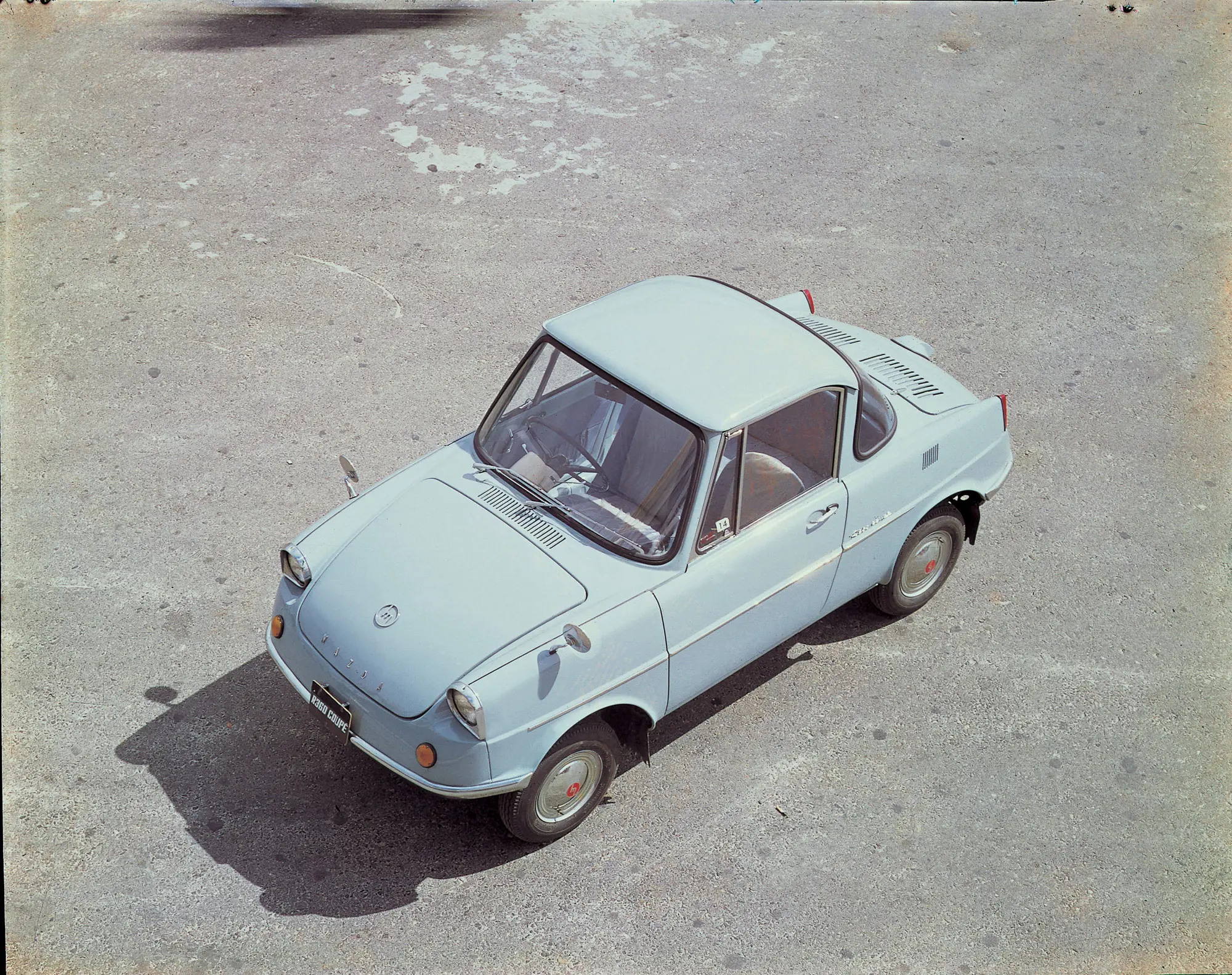
Appetite for the 360, nicknamed ‘ladybug’ (tentoumushi) owing to its beetle-backed profile and reverse hinged doors – was considerable, despite a 15% sales tax introduced on cars (even Kei cars) that same year; in comparison, it did volumes of the Suzulight no favours at all.
With a rear-engined layout, and 25bhp on tap from its 356cc air-cooled twin, the 360 most closely resembled Dante Giacosa’s Fiat Nuova 500, beloved getaway car of mange and anime rogue, Arsène Lupin III – but the 360 was lighter and smaller than the Turin machine, albeit destined for the same purpose.
Commercial Kei cars – vans and pick-ups – weren’t far behind. The Kurogane Baby, produced by an offshoot of the pre-war Ohta firm, debuted to limited success in 1959, as the Mini debuted, but the demand for Keitora, or Kei trucks, was shortly to explode.
By 1961, Subaru’s 360-derived Sambar had arrived in van, minibus and pick-up truck form, and continued to rake in the readies for the firm, establishing a nameplate that would battle the Suzulight Carry for decades to come. At Lancaster Insurance Services, we offer classic car insurance for Japanese import cars.
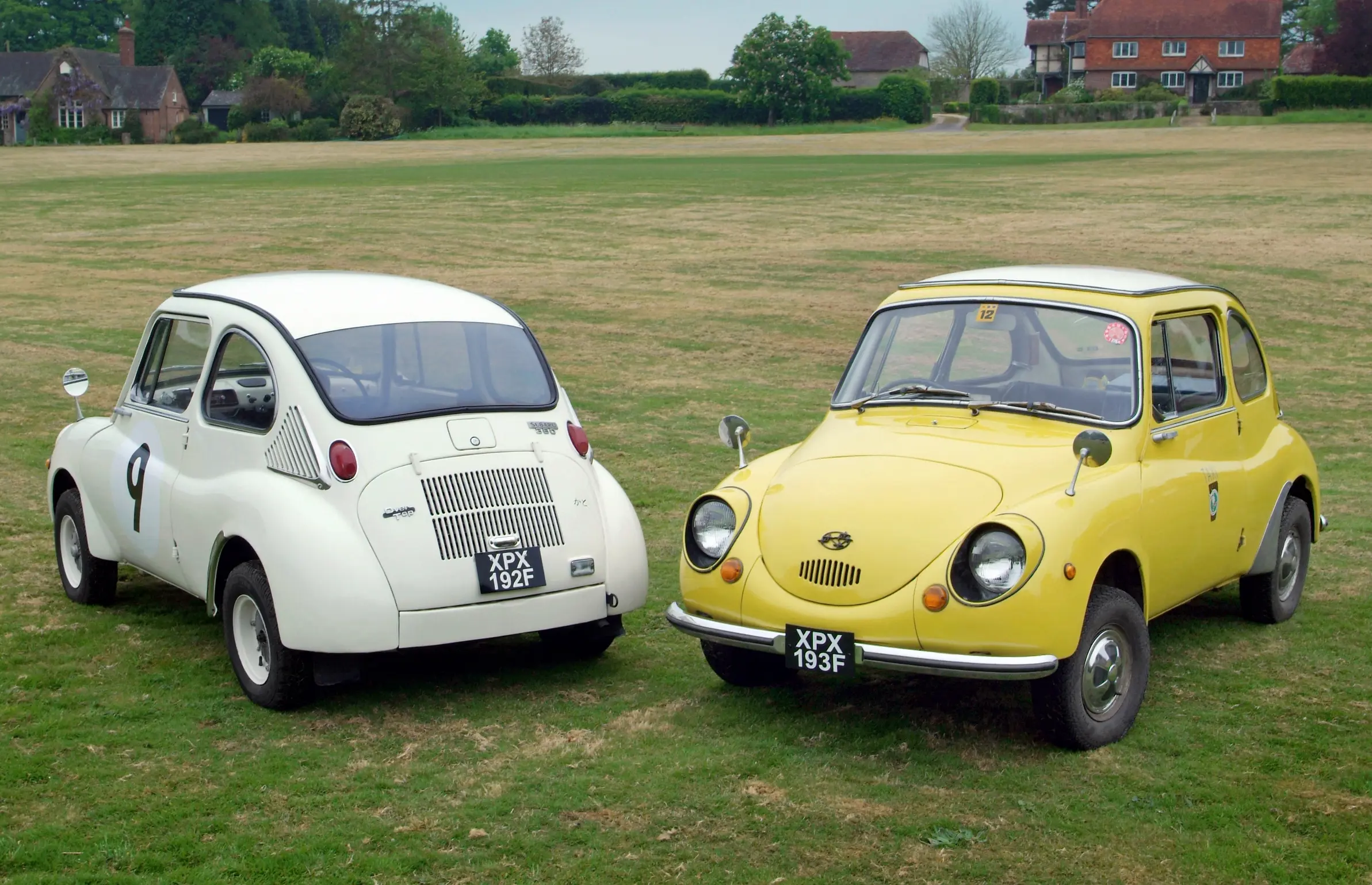
Subaru’s 360 of 1958 wasn’t the first Kei car – but it was the first model to sell in large numbers domestically (image: Subaru Corporation).
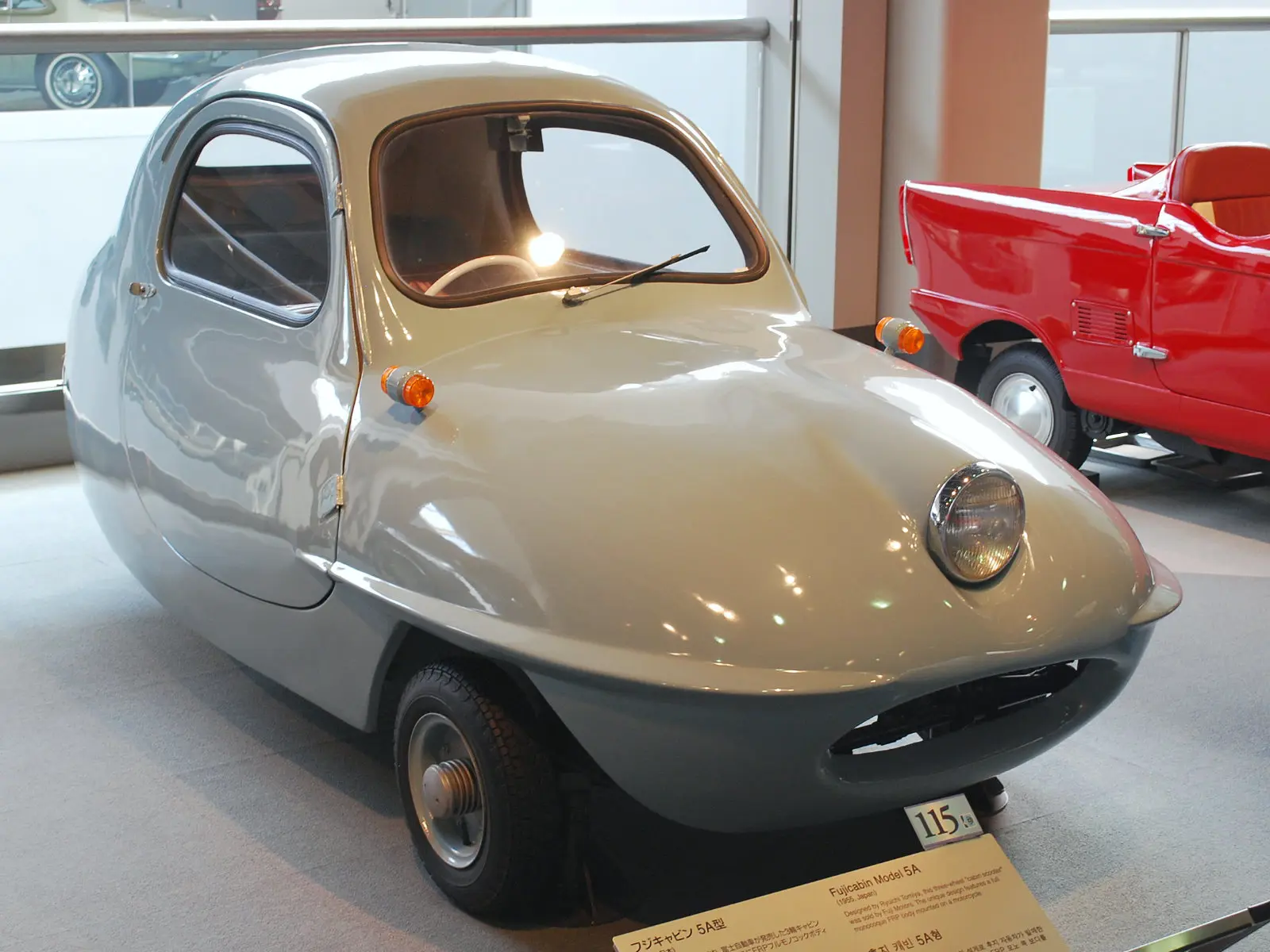
The 1955-1957 Fuji Cabin Model 5A showed a great deal of promise but offered little over a scooter or motorcycle (image: Mythos88, CC BY-SA 3.0).
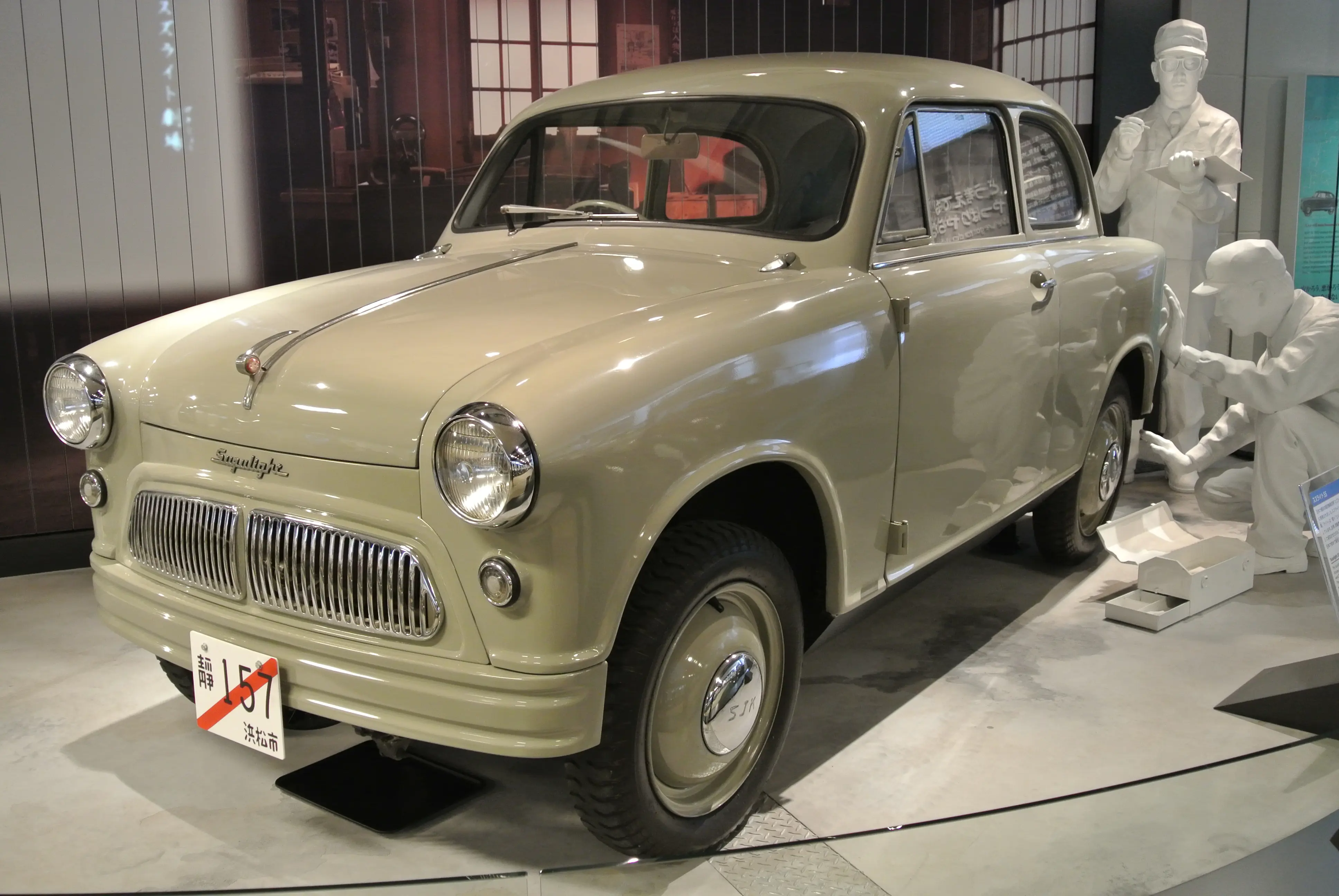
Suzuki’s Suzulight SF saloon was also offered in van (SL), pickup (SP) and delivery van (SD) form, but it was too far ahead of its time to achieve sales success (image: Rainmaker47, CC BY-SA 3.0).
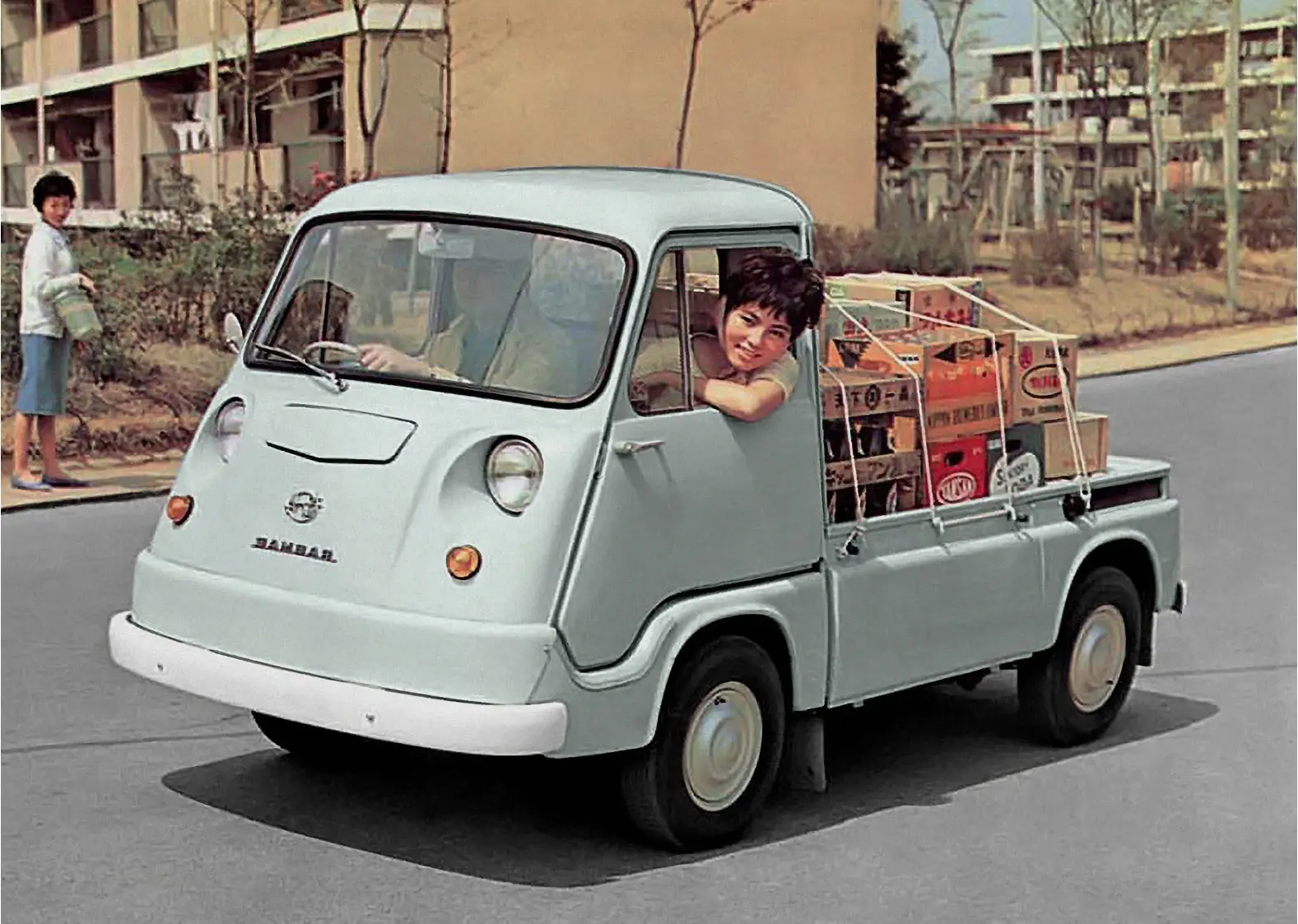
Subaru’s Sambar proved that the Keitora (Kei truck) market had a bright future (image: Subaru Corporation).
